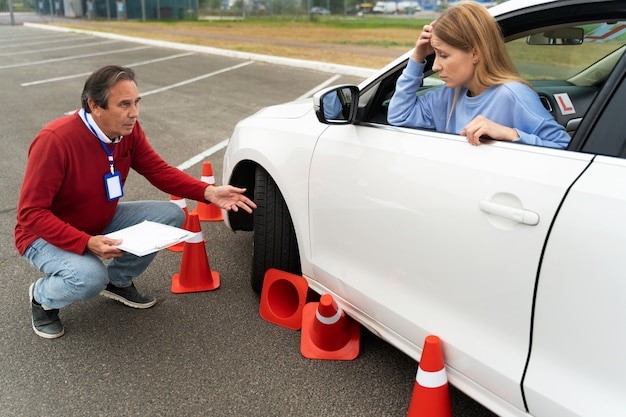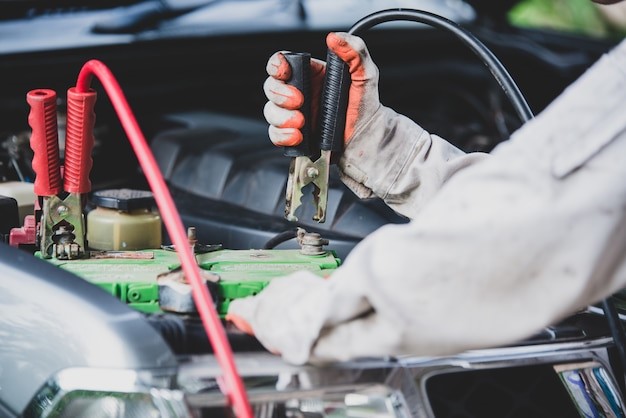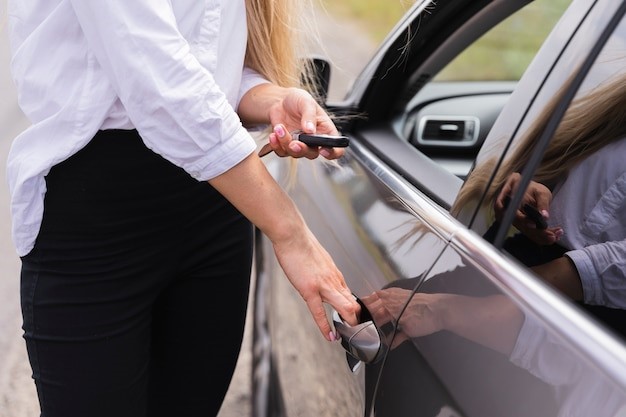Pretend you’re alone on a road, your car won’t start, and your phone is almost dead. Now what? That’s the moment when roadside assistance becomes your lifeline. But most drivers don’t know exactly what roadside assistance is or how it works until they’re stranded on the shoulder, frantically Googling that information under stress. In this guide, we’re going to understand the concept of roadside assistance: what it is, how it works, and how to pick the plan before you’re alone on the road.
Why Roadside Assistance Matters
Peace of Mind Anytime, Anywhere
Roadside assistance is not only related to repairing car probelm; it is the understanding that as long as they are on the road, they are not alone. Be it a cross country drive or on your way to work, assistance could be as simple as a phone call.
Key Benefits of Roadside Assistance
24/7 Emergency Help Anywhere-The Emergency Assistance Wherever, whenever you need the favor of the competent assistance, professional help is available around the clock no matter where.
Saves Money on Emergency Roadside Repairs or Tow– Even one tow can be more expensive than a year of a roadside plan.
Reduces Stress During Breakdowns: Focus on safety during breakdowns which is dealt with by trained professionals.
Often Cheaper Than Paying Per Incident :Paying-Many of these plans are more cost-effective annually when compared to a single incident payout.
Roadside Assistance Plan Comparison
| Feature | Basic Plan | Premium Plan |
| Towing Distance | 5 miles | 50 miles |
| Service Calls Per Year | 3 | Unlimited |
| Fuel Delivery | Included | Included |
| Trip Interruption Coverage | No | Yes |
| Battery Jump Start | Included | Included |
| Flat Tire Change | Included | Included |
| Lockout Service | No | Included |
| Emergency Roadside Repairs | No | Included |
| Concierge Service | No | Yes |
| Cost | Lower cost | Higher cost |
Understanding Roadside Assistance Meaning
Roadside assistance is getting an upgrade. It’s not just about getting the tow truck when your car breaks down. It’s the best responsive service for emergency help — for dead batteries, flat tires, tanks out of fuel, and even small mechanical failures. A lot of people think it’s just towing or jump starting, but today’s plans cover a whole lot more.
Begin by assessing your driving style:
- Do you drive for long distances?
- Do you drive an older vehicle that tends to break down?
- Do you want the fastest service or the cheapest?
From auto insurers and credit card rewards to premium membership organizations such as AAA, there are more options than ever, but it pays to know what you’re buying. Moreover, forget long waits. Platforms currently enable GPS-based dispatch in real time with quicker response times and no hidden fees.
Breaking Down the Term and Its Importance
Some plans do offer reimbursement for trip interruption — hotel, meals, and transportation if you break down far away from home. Others provide concierge-style add-ons such as hotel and rental car discounts.
And lots of car insurance companies offer roadside assistance as a low-cost rider, often at even less than what you’d pay for big-name memberships.
Insider Tip: If you already pay for car insurance, see if the company offers a combined roadside package. It wouldn’t be that expensive; a delay could cost as little as $10–20/year.
How the Best Roadside Assistance Plan Works for You
Not all plans are created equal, and choosing the right or wrong one could leave you stranded with unexpected costs and little or no coverage. The right plan for a daily city commuter isn’t the same as what a weekend road-tripper or long-distance truck driver needs.
Step 1: Know What You’re Paying For
If you don’t have the plan already, no worries, your car manufacturer, insurance company, credit card company, or a specialized service provider might provide roadside assistance. But not all plans are the same. Some limit the number of service calls. Others place a cap on towing for miles they will tow, or impose hidden charges for certain services.

Action: Read the fine print of your plan. Search for limits on services, exclusions, and reimbursement policies.
Step 2: Set Up Your Access Points
If your provider offers an app for your phone, get it now; it means a lot when you’re on the side of the road. Put the 24/7 emergency number in your contacts and keep your member ID in your glove box.
Action: Load all access tools into your phone or car today.
Step 3: What Services Does Roadside Assistance Cover
Most plans include:
Action: What to do if you don’t have coverage: Do not assume coverage. If you are leasing, find out how much manufacturer-backed support comes with the vehicle.
Step 4: Use It Strategically
Do not wait for the worst to come.” If you feel a tire’s gone soft or hear an engine sound that’s not its 90-horsepower self, calling for roadside support sooner can prevent more expensive damage downstream.
Action: Employ your benefits — they are there to save you money and headaches.
Step 5: Plan for Limitations
Sample plan limitations are:
- 3 to 5 free service calls in a year
- Towing distance covering (typically 5-15 miles)
- “Soft services” only — meaning anything more than minor repairs could be out-of-pocket
Action: Know how many calls are allowed by your plan. Avoid using all your call budget on trivial calls if you travel often.
Step 6: Communicate Clearly in Emergencies
When calling for help:
- Share your whereabouts accurately (GPS is a lifesaver).
- Describe Problems In Plain Terms
- Stay safe — keep inside a vehicle if possible
Action: Create a note template with your automobile details for faster support calls.
Step 7: Evaluate Yearly
Roadside needs change. Perhaps you purchased a new car with a different warranty. Or perhaps you’re doing more road tripping than you used to.
Action: Review yearly whether your plan matches your usage.
FAQ’s
Many plans offer towing, battery jumps, fuel delivery, flat tire change, lockout, and minor repair services.
A lot of insurers make it available as an optional add-on. It’s usually cheap, but you will have to add it manually.
Response times vary. App-based services are usually around 20–40 minutes in metro areas when the moon is out, however, a remote location can take longer.
Conclusion:
Roadside assistance is so much more than a backup plan — it’s a time-saver and a stress-reducer, all in one. Whether it’s flat tires, fuel mishaps, or just a need to clear out a musty car, the right plan can minimize a disaster to a minor issue.




